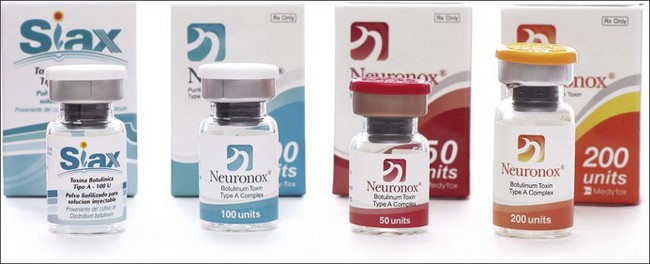8 Medytoxin / Neuronox®
Summary and Key Features
• Neuronox® is a botulinum toxin type A (BoNT-A) product approved in 23 countries
• Neuronox® shows similar microbiological, physicochemical, and biochemical features to Botox®
• Neuronox® has proven its non-inferiority to Botox® in terms of efficacy and safety in various clinical studies in 1 : 1 dose ratio
• The recommended dosage of botulinum toxin type A for wrinkle treatment in Asians is usually lower than that in Caucasians
• The combination technique of multiple intradermal injection of botulinum toxin type A with conventional intramuscular injection is widely utilized in Asia for the purpose of facial rejuvenation
• The use of botulinum toxin type A to reduce the volume of muscles such as masseter, temporalis, calf, and deltoid is becoming more popular and promise to have increasingly broader applications
Introduction
Neuronox® (Medytox Inc., Ochang, South Korea) is a botulinum toxin type A (BoNT-A) product first approved in 2006 by the Korean Food and Drug Administration. Since then, it has been approved under different brand names as Botulift®, Siax®, Cunox®, and Meditoxin® in 23 countries world wide (Fig. 8.1). Among currently available BoNT-A products, Neuronox® seems to be one of the viable alternatives to Botox® in terms of microbiological, physicochemical, and biochemical features, and clinical interchangeability in 1 : 1 dose ratio.







